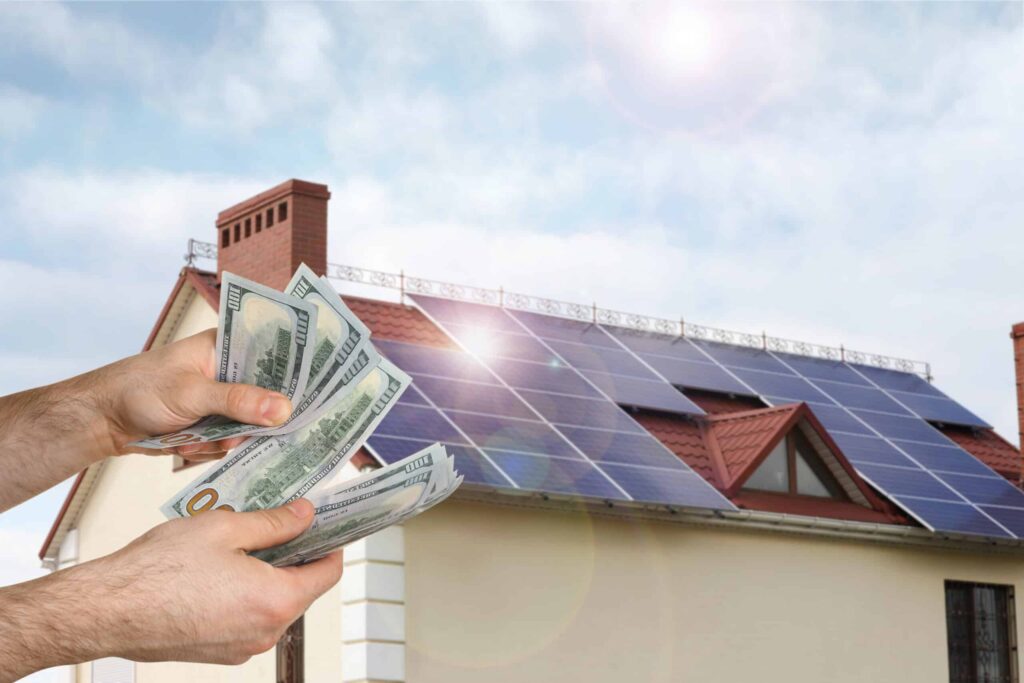Solar Panel Installation for UK Homes: Costs, Benefits & Guide
Solar Panel Installation for UK Homes is becoming an increasingly popular solution as energy prices continue to rise across the country. More homeowners are turning to solar energy as a practical and sustainable way to power their homes. Solar panels not only reduce electricity bills but also support the UK’s goal of achieving net-zero carbon emissions. If you’re considering switching to solar, this guide will walk you through everything you need to know about solar panel installation in the UK – from how it works to the costs, benefits, and maintenance.

1. Why Choose Solar Panels in the UK?
Contrary to popular belief, the UK’s weather is perfectly suitable for solar energy. Modern solar panels are highly efficient and can generate electricity even on cloudy days. Here’s why thousands of UK homeowners are making the switch:
- Lower Energy Bills: Solar panels can reduce electricity costs by up to 70%, depending on your energy usage and system size.
- Government Incentives: The Smart Export Guarantee (SEG) allows you to earn money by selling unused electricity back to the grid.
- Eco-Friendly Power: Solar energy reduces your carbon footprint, helping combat climate change.
- Energy Independence: By producing your own electricity, you become less dependent on volatile energy markets.
2. How Do Solar Panels Work?
Solar panels, also known as photovoltaic (PV) systems, convert sunlight into electricity using silicon-based cells. When sunlight hits these cells, it generates direct current (DC) electricity, which is then converted into alternating current (AC) using an inverter. The AC power can be used to run household appliances, lighting, and heating systems.
If your system produces more electricity than you need, the excess energy can be stored in a solar battery or exported to the grid through the SEG program.
3. What Is the Best Type of Solar Panel for UK Homes?
There are three main types of solar panels commonly used in the UK:
- Monocrystalline Panels: Known for their high efficiency and sleek design. Ideal for smaller roofs.
- Polycrystalline Panels: Slightly less efficient but more affordable; great for larger installations.
- Thin-Film Panels: Flexible and lightweight, suitable for irregular roof shapes but with lower efficiency.
For most UK home owners, monocrystalline panels offer the best long-term value and performance, especially in regions with moderate sunlight.
4. Understanding the Solar Installation Process
The installation of solar panels typically follows these steps:
- Site Assessment: A solar engineer evaluates your roof’s size, direction, shading, and structure to determine the best setup.
- System Design and Quotation: Based on your energy needs, a custom design and cost estimate are provided.
- Installation: Certified installers fit the mounting system, panels, and inverter—usually completed within one to two days.
- Connection and Testing: Your system is connected to your home’s electrical system and tested for safety and performance.
- Grid Registration: Finally, your installer will register your system with your energy supplier for SEG payments.

5. How Much Does Solar Panel Installation Cost in the UK?
The cost of installing solar panels in the UK varies depending on system size, roof type, and equipment quality. On average:
- 4kW system (typical home): £5,000–£7,000
- 6kW system (larger homes): £7,000–£9,000
If you add solar battery storage, expect an additional £3,000–£5,000. While the upfront cost may seem high, most homeowners recover their investment within 6–9 years through energy savings and SEG earnings.
6. How Much Can You Save with Solar Panels?
Savings depend on your system size and energy usage, but a typical household can save between £400 and £700 per year on electricity bills. Additionally, exporting unused energy through the Smart Export Guarantee can generate up to £100–£150 annually, further improving your return on investment.
Over a 25-year period, homeowners could save over £15,000, depending on energy prices and usage patterns.
7. Maintenance and Longevity
Solar panels are designed to last 25–30 years with minimal maintenance. To keep them operating efficiently:
- Clean the panels every 6–12 months to remove dust, bird droppings, and debris.
- Inspect your inverter periodically to ensure it’s functioning correctly.
- Monitor performance using an app or energy meter to detect any drops in efficiency.
- Consider a professional inspection every 2–3 years to check for potential wear or wiring issues.
With proper care, you can maximize your system’s lifespan and efficiency.
8. Environmental Impact
Solar power is one of the cleanest forms of renewable energy available. Each 4kW solar system can reduce carbon emissions by approximately 1 tonne per year, equivalent to planting over 30 trees annually. By switching to solar, you’re actively contributing to the UK’s carbon reduction targets and supporting a sustainable future.
9. Is Solar Right for You?
Before deciding, consider the following:
- Roof Orientation: South-facing roofs generate the most energy, though east- or west-facing ones still perform well.
- Shading: Avoid trees, chimneys, or nearby buildings that block sunlight.
- Roof Space: A 4kW system typically requires around 25–30 square meters of roof space.
- Energy Usage: Homes with higher daytime energy consumption benefit the most.
Final Thoughts
Switching to solar power is one of the smartest investments a UK homeowner can make. Beyond saving money, solar panels provide long-term stability against rising energy costs and help protect the environment. Whether you’re motivated by sustainability or savings, installing solar panels is a step toward a cleaner, more energy-independent future.
If you’re ready to explore solar installation for your home, consult a certified UK installer to get a personalized assessment and cost estimate. The sun might not shine every day in Britain, but with the right solar setup, your home can still harness its full power.
